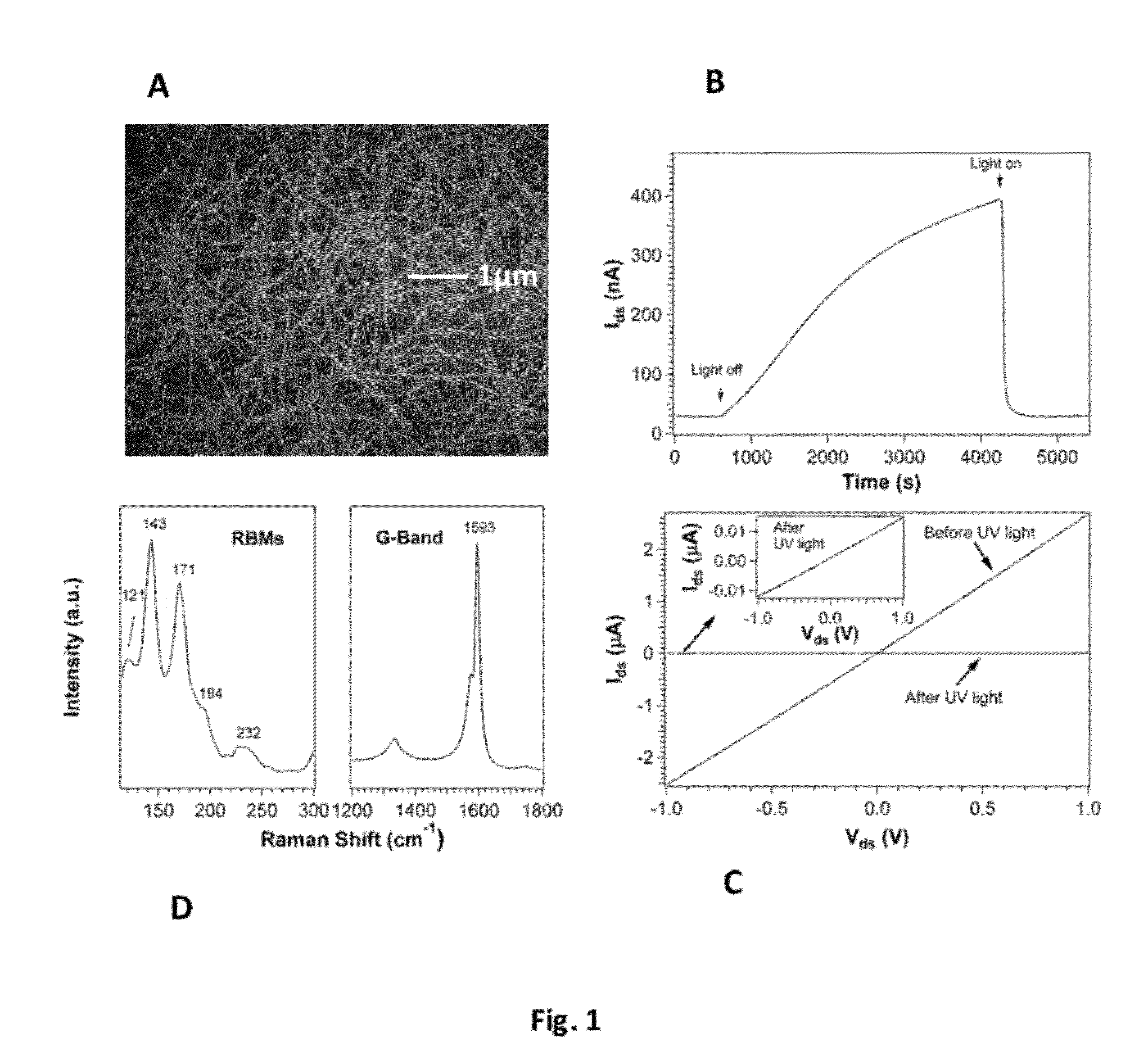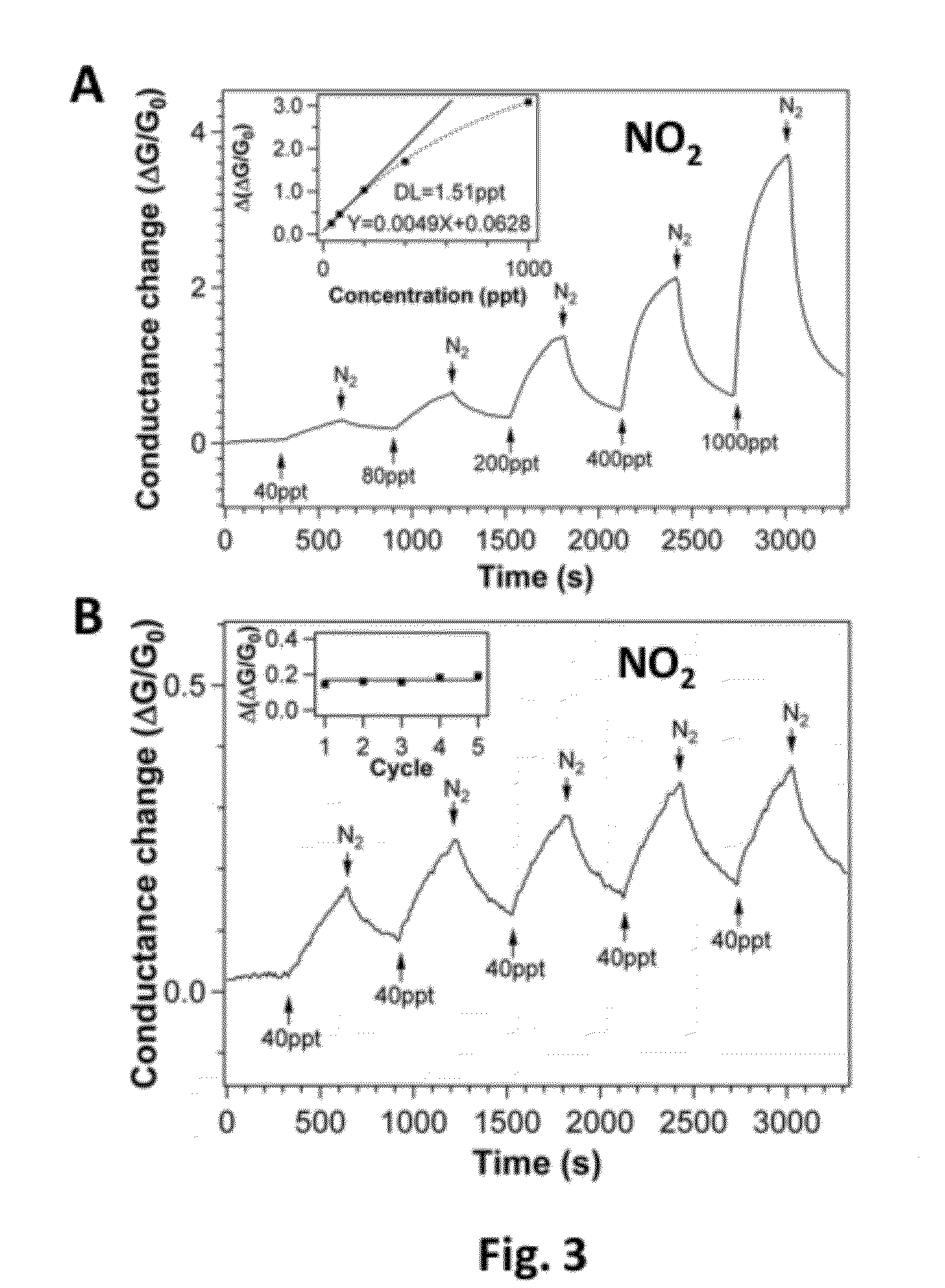Method of enhanced detection for nanomaterial-based molecular sensors
a molecular sensor and nanomaterial technology, applied in the field of enhanced detection of nanomaterial-based molecular sensors, can solve the problems of pristine single-walled carbon nanotubes, and achieve the effect of confirming ultra-sensitivity
- Summary
- Abstract
- Description
- Claims
- Application Information
AI Technical Summary
Benefits of technology
Problems solved by technology
Method used
Image
Examples
Embodiment Construction
[0024]In more detail, the presently disclosed method for molecular analysis includes providing a nanomaterial-containing sensor component, radiating this nanomaterial-containing sensor component with a predetermined wavelength, contacting the nanomaterial-containing sensor component with a molecular analyte while radiating also continues, and then measuring a change in an electrical or physical property of the nanomaterial-containing sensor component during this contacting step.
[0025]The electrical or physical property changed by the contacting with the analyte can be, for example and without limitation, the conductivity, dielectric constant, dielectric strength, permeability, permittivity, piezoelectric constant, Seebeck coefficient, thermopower, capacitance, wave impedance, wave absorption, emission, luminescence, luminance, thermal conductivity, mechanical and optical properties of the nanomaterial-containing sensor component. By applying, for example, a voltage from a voltage so...
PUM
| Property | Measurement | Unit |
|---|---|---|
| thicknesses | aaaaa | aaaaa |
| thicknesses | aaaaa | aaaaa |
| gate voltages | aaaaa | aaaaa |
Abstract
Description
Claims
Application Information
 Login to View More
Login to View More - R&D
- Intellectual Property
- Life Sciences
- Materials
- Tech Scout
- Unparalleled Data Quality
- Higher Quality Content
- 60% Fewer Hallucinations
Browse by: Latest US Patents, China's latest patents, Technical Efficacy Thesaurus, Application Domain, Technology Topic, Popular Technical Reports.
© 2025 PatSnap. All rights reserved.Legal|Privacy policy|Modern Slavery Act Transparency Statement|Sitemap|About US| Contact US: help@patsnap.com



